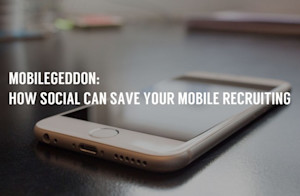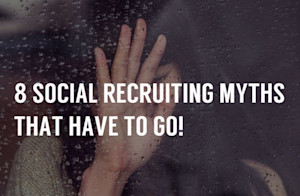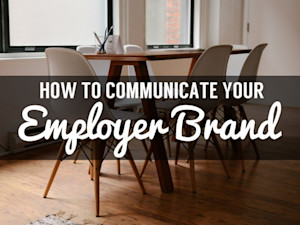Communicating your employer brand is crucial to attracting candidates.
Being authentic in this communication and honest about your company’s culture is essential to ensuring that the candidates you attract are a good fit.
Telling your company’s story in a cohesive, transparent and engaging way throughout the entire recruitment process is the best way to accomplish both of these goals.
73% of recruiters said that to compete against other employers they highlight company culture. (Source: Jobvite)
Employer brand storytelling is an elegant form of marketing. It gives your company a face and a soul, which is refreshing in a world full of post and pray job ads.
It isn’t easy to create an engaging story or to tell it consistently throughout your candidate’s experience, but the rewards far outweigh the time involved.
Start with an outline
Every good story has a simple narrative arc at its core. To find your narrative, ask yourself and your team:
What is the essence of our company? What are our core values? What must potential employees know about our culture?
Write out everything that you want to convey to job seekers and potential employees, then take all of those points and put them into a logical order.
Approach ordering your points with candidate experience in mind. Think about what would attract a job seeker initially and progress from there.
This will help your story unfold naturally and in a way that makes sense to your candidate.
Choose Your Channels
The social networks and platforms that you use to promote your employer brand will influence the content that you create, so it’s wise to choose them early.
Blogging is a wonderful way to show candidates what your company is about. Unlike most social networks, blogging allows you to write long form stories that are great for giving candidates detailed information about your culture, your application process, and your current team.
A blog hosted on your company site can also be used to drive more traffic to your job postings and blog posts can be easily repurposed into shorter content that you can share on social networks.
Companies are effectively marketing their employer brand on Facebook, LinkedIn, Twitter, Instagram, Pinterest, and even Snapchat. They’re all fantastic resources, but you do not have to, nor should you, use all of them.
Choose your networks based on where your candidates are. To determine where they are you can research surveys such as Pew Internet’s Social Networking Fact Sheet, and/or ask your current employees about their own social network use.
Gather Intel
Compile as much supporting information as you can. Employee profiles, party photos, quotes from happy customers, videos from team building events… Anything that you could use to give candidates positive examples of what it’s like to work at your company is potential content for marketing your employer brand.
Turn Intel Into Content
Once you’ve gathered everything that you can from your team, it’s time to take the raw material and turn it into shareable content.
Write up employee profiles, blog posts, and short messages that convey your company culture. Edit all of your photos and size them properly to share on different social networks. Create images with relevant text overlaid such as inspirational quotes, messages from you CEO, or your company’s core values.
For more ideas about what content to create, here’s a guide to best practices for posting on Facebook, Twitter, and LinkedIn.
Make Your Content Work Overtime
Creating content for your employer branding is the most time-consuming part of the process.
The most effective way to save some of this time is to repurpose your content.
For example, start by writing a blog post profiling an outstanding employee that features some great quotes. Add some well-edited images of that employee, such as a headshot, pictures of them working, and photos of them interacting with their colleagues. Edit these photos and add them to the blog post.
Then create a Facebook post that includes one of the images that you’ve already made for your blog post and a bite-sized write up about that employee.
Next choose an awesome quote from your featured employee to Tweet with some relevant hashtags and a link to the blog post.
And finish up by adding a fun filter to one of the photos from your blog post and sharing it on Instagram with #hiring and a quick caption that lets your followers know that they can read more on your blog.
That’s how you can take one piece of original content and turn it into 4 pieces of unique content that you can share across multiple platforms.
Enlist Help
Getting your team involved in your employer branding works on multiple levels.
Not only will your message sound more authentic when delivered by actual employees, but also personal social media accounts tend to get more engagement than company accounts so your message will reach more potential candidates.
Ask your team to share your employer branding posts on their social networks, to comment on your Facebook Page, and like, retweet, and favourite the content you share.
Engage with Your Candidate
Building a strong employer brand isn’t just about broadcasting your message; it is also about listening to job seekers and candidates and offering them the support, feedback, and answers that they need.
Stick around after you share a post on Facebook to respond to comments, thank people who retweet your Twitter posts, and send quick emails letting applicants know about the status of their application.
These interactions are crucial to your employer branding as this is where you prove that your company is as awesome and employee friendly as your blog posts say it is!
Check out this case study for an awesome example of employer branding with Facebook!



